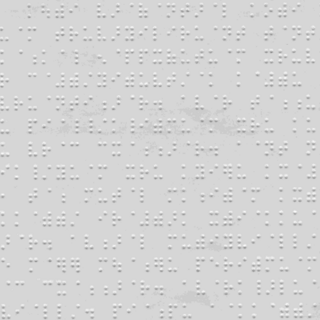
An abugida – sometimes also called alphasyllabary, neosyllabary, or pseudo-alphabet – is a segmental writing system in which consonant–vowel sequences are written as units; each unit is based on a consonant letter, and vowel notation is secondary, similar to a diacritical mark. This contrasts with a full alphabet, in which vowels have status equal to consonants, and with an abjad, in which vowel marking is absent, partial, or optional – in less formal contexts, all three types of the script may be termed "alphabets". The terms also contrast them with a syllabary, in which a single symbol denotes the combination of one consonant and one vowel.

Devanagari is an Indic script used in the northern Indian subcontinent. Also simply called Nāgari, it is a left-to-right abugida, based on the ancient Brāhmi script. It is one of the official scripts of the Republic of India and Nepal. It was developed and in regular use by the 7th century CE and achieved its modern form by 1000 CE. The Devanāgari script, composed of 48 primary characters, including 14 vowels and 34 consonants, is the fourth most widely adopted writing system in the world, being used for over 120 languages.
In the linguistic study of written languages, a syllabary is a set of written symbols that represent the syllables or moras which make up words.

The Sinhala script, also known as Sinhalese script, is a writing system used by the Sinhalese people and most Sri Lankans in Sri Lanka and elsewhere to write the Sinhala language as well as the liturgical languages Pali and Sanskrit. The Sinhalese Akṣara Mālāva, one of the Brahmic scripts, is a descendant of the Ancient Indian Brahmi script. It is also related to the Grantha script.
The Thai script is the abugida used to write Thai, Southern Thai and many other languages spoken in Thailand. The Thai alphabet itself has 44 consonant symbols and 16 vowel symbols that combine into at least 32 vowel forms and four tone diacritics to create characters mostly representing syllables.
Malayalam script is a Brahmic script used commonly to write Malayalam, which is the principal language of Kerala, India, spoken by 45 million people in the world. It is a Dravidian language spoken in the Indian state of Kerala and the union territories of Lakshadweep and Puducherry by the Malayali people. It is one of the official scripts of the Indian Republic. Malayalam script is also widely used for writing Sanskrit texts in Kerala.
Anusvara, also known as Bindu, is a symbol used in many Indic scripts to mark a type of nasal sound, typically transliterated ⟨ṃ⟩ or ⟨ṁ⟩ in standards like ISO 15919 and IAST. Depending on its location in the word and the language for which it is used, its exact pronunciation can vary. In the context of ancient Sanskrit, anusvara is the name of the particular nasal sound itself, regardless of written representation.
The Burmese alphabet is an abugida used for writing Burmese. It is ultimately adapted from a Brahmic script, either the Kadamba or Pallava alphabet of South India. The Burmese alphabet is also used for the liturgical languages of Pali and Sanskrit. In recent decades, other, related alphabets, such as Shan and modern Mon, have been restructured according to the standard of the Burmese alphabet
The Balinese script, natively known as Aksarä Bali and Hanacaraka, is an abugida used in the island of Bali, Indonesia, commonly for writing the Austronesian Balinese language, Old Javanese, and the liturgical language Sanskrit. With some modifications, the script is also used to write the Sasak language, used in the neighboring island of Lombok. The script is a descendant of the Brahmi script, and so has many similarities with the modern scripts of South and Southeast Asia. The Balinese script, along with the Javanese script, is considered the most elaborate and ornate among Brahmic scripts of Southeast Asia.

The Tamil script is an abugida script that is used by Tamils and Tamil speakers in India, Sri Lanka, Malaysia, Singapore, Indonesia and elsewhere to write the Tamil language. It is one of the official scripts of the Indian Republic. Certain minority languages such as Saurashtra, Badaga, Irula and Paniya are also written in the Tamil script.
The Odia script is a Brahmic script used to write primarily Odia language and others including Sanskrit and other regional languages. It is one of the official scripts of the Indian Republic. The script has developed over more than 1000 years from a variant of Siddhaṃ script which was used in Eastern India, where the characteristic top line transformed into a distinct round umbrella shape due to the influence of palm leaf manuscripts and also being influenced by the neighbouring scripts from the Western and Southern regions.

The Grantha script was a classical South Indian Brahmic script, found particularly in Tamil Nadu and Kerala. Originating from the Pallava script, the Grantha script is related to Tamil and Vatteluttu scripts. The modern Malayalam script of Kerala is a direct descendant of the Grantha script. The Southeast Asian and Indonesian scripts such as Thai and Javanese respectively, as well as South Asian Tigalari and Sinhala scripts, are derived or closely related to Grantha through the early Pallava script. The Pallava script or Pallava Grantha, emerged in the 4th century CE and was used until the 7th century CE, in India. This early Grantha script was used to write Sanskrit texts, inscriptions on copper plates and stones of Hindu temples and monasteries. It was also used for classical Manipravalam – a language that is a blend of Sanskrit and Tamil. From it evolved Middle Grantha by the 7th century, and Transitional Grantha by about the 8th century, which remained in use until about the 14th century. Modern Grantha has been in use since the 14th century and into the modern era, to write classical texts in Sanskrit and Dravidian languages. It is also used to chant hymns and in traditional Vedic schools.

Saurashtra is an Indo-Aryan language spoken primarily by the Saurashtrians of Southern India who migrated from the Lata region of present-day Gujarat to south of Vindhyas in the Middle Ages.
Virama is a Sanskrit phonological concept to suppress the inherent vowel that otherwise occurs with every consonant letter, commonly used as a generic term for a codepoint in Unicode, representing either
- halanta, hasanta or explicit virāma, a diacritic in many Brahmic scripts, including the Devanagari and Bengali scripts, or
- saṃyuktākṣara or implicit virama, a conjunct consonant or ligature.

Bharati braille, or Bharatiya Braille, is a largely unified braille script for writing the languages of India. When India gained independence, eleven braille scripts were in use, in different parts of the country and for different languages. By 1951, a single national standard had been settled on, Bharati braille, which has since been adopted by Sri Lanka, Nepal, and Bangladesh. There are slight differences in the orthographies for Nepali in India and Nepal, and for Tamil in India and Sri Lanka. There are significant differences in Bengali Braille between India and Bangladesh, with several letters differing. Pakistan has not adopted Bharati braille, so the Urdu Braille of Pakistan is an entirely different alphabet than the Urdu Braille of India, with their commonalities largely due to their common inheritance from English or International Braille. Sinhala Braille largely conforms to other Bharati, but differs significantly toward the end of the alphabet, and is covered in its own article.
Kha is the second consonant of Indic abugidas. In modern Indic scripts, kha is derived from the Brahmi letter , which is probably derived from the Aramaic ("Q").

Burmese Braille is the braille alphabet of languages of Burma written in the Burmese script, including Burmese and Karen. Letters that may not seem at first glance to correspond to international norms are more recognizable when traditional romanization is considered. For example, သ s is rendered ⠹th, which is how it was romanized when Burmese Braille was developed ; similarly စ c and ဇ j as ⠎s and ⠵z.
Ga is the third consonant of Indic abugidas. In modern Indic scripts, ga is derived from the early "Ashoka" Brahmi letter , which is probably derived from the Aramaic letter after having gone through the Gupta letter .

Zanabazar's square script is a horizontal Mongolian square script, an abugida developed by the monk and scholar Zanabazar based on the Tibetan alphabet to write Mongolian. It can also be used to write Tibetan language and Sanskrit as a geometric typeface.
Ū is a vowel of Indic abugidas. In modern Indic scripts, Ū is derived from the early "Ashoka" Brahmi letter . As an Indic vowel, Ū comes in two normally distinct forms: 1) as an independent letter, and 2) as a vowel sign for modifying a base consonant. Bare consonants without a modifying vowel sign have the inherent "A" vowel.









